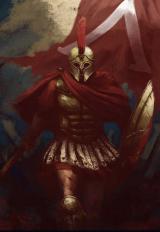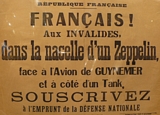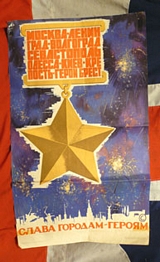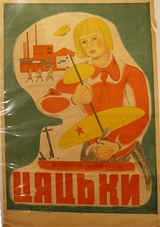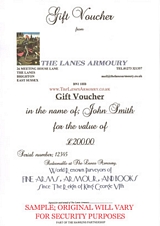WW1 / WW2 / 20th Century
An Officer's Cap Badge of the Northamptonshire Regt. WW2
In silver metal and gilt. With battle honour scrolls of Gibralter and Talavera. Silver coloured metal, not hallmarked English silver. read more
95.00 GBP
Wonderous Pieces Added Every Day & There is Probably Nowhere Else In The World You Can View Such Fabulous Wonders, & Where Everything Is For Sale
Under one roof, from a rare American Civil War Revolver used in the U.S. Navy, and by cavalry of both the North and the South. An Original, Huge, WW2 Shell from A German King Tiger Tank, to an Original Imperial Roman Legionary’s Gladius, to a Museum Quality Samurai Sword by on of the great makers of early Japan. These past three weeks we have added, and are still adding, original, ancient classical edged weapons, from Rome, Carthage, Persia, Greece, and Scandinavia, from fine English collection/s [acquired in the 1990’s or before] including; a 2000 year old gladius from the time of Julius Caesar to Augustus to Nero. A museum grade 1000+ year old Viking chieftain [king] or earl’s [jarl] sword inlaid with knotwork silver inlay. A bronze and iron Archemeanid sword from the time of the Greco-Persian wars of Xerxes the Great against the Spartans at Thermopylae. An Imperial Roman 1st century ring, the type as worn by the Imperial Pretorian Guard with the symbol of a lion, from the time of the Emperors Augustus, Tiberius, Caligula, Claudius and Nero. A superb 3rd to 4th century BC Falcata sword similar to the Greek Kopis, the sword used by Hannibal’s army in the 2nd Punic War and his invasion of Rome across the Alps, and a 3rd Century Imperial Roman Sword, from the time of Emperor Constantine and the Battle of Cibalae. Plus a remarkable 1066 period Original Norman Iron Four Plate Helmet, [as Seen Depicted in the world famous so-called Bayeux Tapestry] & two early Books, one, an original 5th century Roman treatise on Roman warfare, and 18th Century biography on 18th century Warfare. Plus, as usual, many more pieces of historical interest. read more
Price
on
Request
An Original French Bond Poster 1917-18. Subscribe to the National Defence
Francais aux invalides dans la narcelle d'un zeppelin face a l'avion de Guynemer et a cote d'un tank souscrivez a l'emprunt de la defense national. A poster of an exhibition at the great French museum Les Invalides. In the square in front of the museum there was exhibited; a narcelle from a shot down Zeppelin, WW1 French ace Guynemer's plane, and a tank. Backed on to linen, from the American Forbes Library. read more
265.00 GBP
A Simply Superb Master Conductor/Composer's Solid Silver Presentation Baton
For those with an interest in presentation pieces in the realm of musical memorabilia. Engraved 'Geisha', O.M. [Order of Merit] 25th April 1925. C.A.O.S. [Choral & Orchestra Society]. In mallacca and mounted in hallmarked solid silver. Presentation gifted to a composer/conductor who would have been a contemporary of Sir Edward Elgar O.M. Sadly, we know not to whom it may have been presented. However research in the right quarter may well bear fruit. Unscrews at the midsection into two pieces. Superb quality as one might expect. read more
185.00 GBP
A Fabulous Imperial German Air Service Flask & Cigarette Case
This is just the epitome of all things Imperial German from the time of Kaiser Willhelm and Baron von Richthofen. The reservists flask was a peculiarly German artifact, and alongside the bier stein absolutely typical of the Germanic age of the early 20th century. The flask is an alloy depicting an embossed Zeppelin, an embossed plane and another, an anchor and a panel for luftschiff reserve service, and a similar for the flieger reserve service. It has a mono plane cup holder with a young pilot and his fraulein drinking and reveling. The front panel opens on a hinge revealing a picture behind the flask and a holder for cigarettes. It has wear and aging, but for the Imperial German WW1 reservist flask and stein collector you could probably not find a better or more desirable example. Overall 9 inches tall by 5 inches wide by 2 inches deep read more
395.00 GBP
Every Customer Should Expect & Will Receive Our World Renown 5* Star Service, Day In, Day Out, 365 Days of the Year
We have received the greatest honour of being described by almost every visitor to our store in Brighton, as possibly, the very best and most remarkable specialist shop in the country, if not the world. Our standards of personal service, honed through the generations for over 100 years, we hope, are second to none, and every possible effort is made to create the best possible atmosphere and assistance, for every single customer, be it for a single item, or hundreds, in person, or via our website.
No stone is left unturned in order to ensure every single customer’s buying or selling experience is a pleasure and a joy. Thankfully, dozens of you confirm this to us every single day, these days electronically, and for that we cannot thank you enough. Stay Healthy, Stay Safe. read more
Price
on
Request
Original Lewis & Vickers Machine Gun Crates
Just uncovered from long-term storage in our gun room, acquired over the past 50 to 60 years.
Original Lewis and Vickers machine-gun transit cases. Designed and constructed by the British ordnance and made to exacting standards, to suffer the vagaries and exertions of wartime combat on the front line, and storage of machine guns for up to, and over, 100 years. Solid wood with all metal edge strengthening supports. They were designed to be thrown around and heavily manhandled on the backs of army trucks, tanks, and armoured vehicles in combat war situations, even to be dropped out of planes for arms supply drops behind enemy lines, they are incredibly strong.
Beautifully designed constructed and perfect for storage, and historical collectors. Also absolutely ideal for a deactivated Lewis or Vickers machine gun collectors to complete historical display.
***Available for UK collection only***. They are available for collection from our Brighton gun shop on a click and collect basis by appointment. Please telephone or email for details. They are simply incredible value probably couldn’t be made for 10 times the price. Call 07721 010085. We have seen these sell for over £200 each in the past, when they have been rarely available
We also have some Bren gun cases And Russian USSR maxim machine-gun transit cases. Some are stencilled others are plain. We do not have any of the actual guns available for sale at present. read more
90.00 GBP
A Stunning Russian Cold War Era Poster
Original poster with interesting subject matter of medal of a Hero of the Soviet Union. This is one of a collection of Russian USSR posters we have acquired from the estate of an ex British Glider Pilot of WW2. This poster is folded and in condition as seen in the photos. Dated 1968 38 inches x 22 inches. This poster would look super nicely framed read more
275.00 GBP
Original Russian Soviet, USSR 1930's Propaganda Poster
Unusual poster with munitions factory, airship and young woman with plane. Early Russian posters of the Lenin and Stalin period before the war are now becoming extraordinarily collectable. Another poster for the Battleship Potemkin [a Russian historical silent film that is shown in our gallery for illustration purposes] designed by the Stenberg brothers in 1925, sold in November 2012 for 103,250 Pounds Sterling at Christies Auction in London. It arranged class elements into a powerful design of revolutionary upheaval. The poster comprises three pictorial elements: the battleship, the officer and the able seaman. Each of these signs is placed in relation to the others. The fragile balance of bourgeois society is revealed at its very tipping-point.
We never normally comment on the investment potential of any collectable, but the potential for all underpriced WW1 and WW2 posters must be incredible, for example the more famed poster, 'Keep Calm and Carry On' can now sell for over £20,000.
Photographed in plastic protector frame case. Sent unframed when purchased 24.5 inches x 37 inches read more
825.00 GBP
A GIFT VOUCHER FOR ANY AMOUNT CAN BE WITH YOU WITHIN THE HOUR !
A Gift Voucher is often the ideal solution to leave the decision of the item to choose to the person you wish to gift. They can choose any form of militaryantiques and militaria or books they wish. They can be with you via email within the hour, if you call us direct during opening hours, or by the next day if you contact us out of hours. They are simple to print off at home, and sometimes it can be the perfect solution to that last minute need during these difficult times. They are available from us for all values, and as required, and are entirely bespoke to the recipient. All are unique and customised for each and every occasion. We have priced this sample example as our £200.00 voucher, but you can specify any alternative amount at all in the 'comment' section in the Webstore Order page, or call us direct. Our unique bespoke Gift Vouchers are valid without time limit for use at the recipients convenience at any time in the future. Just call 01273 321357 or 07721 010085 read more
Price
on
Request



